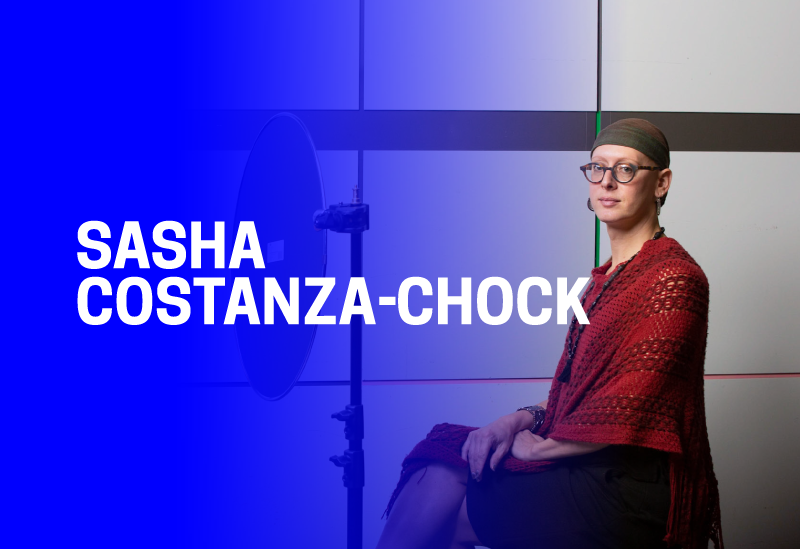Table Of Content
- Part 2: A.I., Intersectionality, and the Matrix of Domination
- Million Voters Project
- Leveraging computational tools to enhance product design
- Design Justice: Community-Led Practices to Build the Worlds We Need
- What Are Inclusive Design and Design Justice?
- DJN Principles Translation: How-Tos and Guidelines

We uplift liberatory experiences, practices, and tools, and critically question the role of design and designers. UWF’s online bachelor’s degree in criminal justice includes a total of 120 credit hours, up to 90 of which may be transferred from a regionally accredited institution. After completing 60 general education credit hours, which include recommended lower-division prerequisite courses, you will complete 60 credit hours in criminal justice, which can include up to six internship credit hours.
Part 2: A.I., Intersectionality, and the Matrix of Domination
We provide eligible students with an alternative to paying the full amount of tuition at the beginning of each term in the form of an installment payment plan or a short-term loan. The online bachelor’s degree in criminal justice from the University of West Florida covers current theories and trends in the criminal justice system, policing, courts, corrections and research design. Fathers & Families of San Joaquin works to address the varying needs of men, women, youth, their families and the community of the San Joaquin Valley. FFSJ addresses critical problems such as institutional inequity, fatherless homes, wide spread poverty, employment disparities, inadequate access to public health services, community re-entry and youth on youth violence. The Youth Justice Coalition is working to build a youth, family, and incarcerated people’s movement to challenge America’s addiction to incarceration and race, gender and class discrimination in Los Angeles County’s, California’s and the nation’s juvenile and criminal injustice systems.
Million Voters Project
Recidiviz began as a 20% project at Google and has since grown to become one of the brightest and kindest teams that tech has to offer. Systems design fosters certain kinds of communities while suppressing others, through the automated enforcement of community guidelines, rules, and speech norms, instantiated through content moderation algorithms and decision support systems. Nor is Facebook’s position improved by the recent leak of content moderation guidelines that note that ‘White supremacist’ posts should be banned, but that ‘White nationalist’ posts are within free speech bounds. As she notes, when there is both a growing realization of structural inequities across our social systems, including and especially our educational systems, and a denial on the part of many that such inequities exist, we are reminded of how critically we should be examining our designs and design processes in higher education. The 2022 summit, funded by the d’Arbeloff Fund, included undergraduates, graduate students, professors at all levels, and industry professionals “who were thinking about training for their employees and how to bring design justice into the culture of their companies,” said Ostrowski. We wield our collective power and experiences to bring forth worlds that are safer, more just, more accessible, and more sustainable.
Leveraging computational tools to enhance product design

Systems that will shape the distribution of benefits and harms across society. For example, the ability to immigrate to the United States is unequally distributed among different groups of people through a combination of laws passed by the U.S. Congress, software decision systems, executive orders that influence enforcement priorities, and so on. Recently, the Department of Homeland Security (DHS) had an open bid process to develop an automated ‘good immigrant/bad immigrant’ prediction system that would draw from people’s public social media profiles. After extensive pushback from civil liberties and immigrant rights advocates, DHS announced that the system was beyond ‘present day capabilities’.
For example, we know that in the Americas our architecture was almost 100% built on the aesthetics and desires of our colonizers. Indigenous and black peoples had no participation in the process of construction of cities and buildings and still had their ancestry and socio-cultural habits denied in the process of creating everything that involves an urban space. Design Justice is a branch of architecture and design focused on redesigning cities, products, services and environments with historic reparations in mind.
What Are Inclusive Design and Design Justice?
Many of these juvenile offenders are known to law enforcement as repeat offenders, trapped in a recidivist cycle that enables their behavior. The company, along with leading external industry experts, continues to monitor the internet and dark web to determine if data has been published. There were 22 screenshots, allegedly from exfiltrated files, some containing PHI and PII, posted for about a week on the dark web by a malicious threat actor.
DJN Principles Translation: How-Tos and Guidelines
In particular, the people who are most adversely affected by design decisions — about visual culture, new technologies, the planning of our communities, or the structure of our political and economic systems — tend to have the least influence on those decisions and how they are made. Ito ends “resisting reduction” on a hopeful note, with a nod towards the many people, organizations, and networks that are already working towards what he calls “a culture of flourishing”13. He mentions high school students and MIT Media Lab students; the IEEE working group on the design of A.I. Around human wellbeing; the work of Conservation International to support indigenous peoples; and Shinto priests at Ise Shrine. I also believe that, despite the seemingly overwhelming power of the matrix of domination, it is important to center the real world practices of resistance and the construction of alternatives.
It’s a conference that strives harder than any that I know of to be inclusive of all kinds of people, including Queer, Trans, Intersex, and Gender Non-Conforming (QTI/GNC) folks. I want to acknowledge Sarah Lohnes Watulak, my colleague and friend at Middlebury, who introduced me to research about inclusive design and design justice and to the inspiring people working in these fields. Before convening the summit and workshop, the researchers analyzed the design research and education space to learn more about how design classes approach equity, ethics, and justice.
Ethics and Social Justice (offered Fall :
Coding Rights, led by hacker, lawyer, and feminist Joana Varon, works across Latin America to make complex issues around data and human rights much more accessible for broader publics, engage in policy debates, and help produce consent culture for the digital environment. The database, models, and algorithms that assess deviance and risk are all binary and cisnormative. The assignment of a male or female TSA agent to perform the additional, more invasive search is cis- and binary gender normative as well. QTI/GNC people are thus disproportionately burdened by the design of millimeter wave scanning technology and the way that technology is used. Those who are also People of Color (PoC), Muslims, immigrants, and/or People with Disabilities (PwD) are doubly, triply, or multiply-burdened7 by, and face the highest risk of harms from, this system.
This press release contains “forward-looking statements” which are intended to take advantage of the “safe harbor” provisions of the federal securities law. The words “believe,” “expect,” “intend,” “estimate,” “anticipate,” “forecast,” “outlook,” “plan,” “project,” “should” and similar expressions identify forward-looking statements. These forward-looking statements are based on management’s current expectations and assumptions; however, by their nature, forward-looking statements are subject to risks, uncertainties and assumptions that are difficult to predict or quantify. You should not place undue reliance on forward-looking statements, which speak only as of the date they are made.
They will involve families, community members, organizers, public defenders, and system actors to maximize pretrial release and minimize pretrial detention, intrusive supervision, and extraction of community wealth. Common Justice has created the first (and so far only) alternative-to-incarceration and victim service program that focuses on violent felonies in the adult courts. Nationally, they leverage the lessons from their direct service to transform the justice system through partnerships, advocacy, and elevating the experience and power of those most impacted. We believe that many "tough-on-crime" policies actually erode public safety. Because our country spends so much on prisons and jails, not enough funding is left for public health, education, and job development. Over two million people are behind bars every night in the United States – disproportionately people of color – which tears families apart and leaves many in poverty.
Accordingly, I’ll end by describing a few more of the exciting emerging organizations and networks that are already working to incorporate intersectional analysis into the design of A.I. Going beyond accommodations involves designing for flexibility, choice, and empowerment. A great example is Professor Michael Wesch's use of mixtapes—recordings of weekly course readings and other materials.11 While helpful and maybe necessary for students who need accommodations, the mixtapes also provide support for students facing other learning barriers, such as time limitations due to work or long commutes. Similarly, Professor Maha Bali provides multiple paths that students in her digital literacy course can take to reach their goals. Students can explore those best suited to their needs and, in doing so, co-design their own learning.12 A third example is the Open CoLab's ACE Framework at Plymouth State University.
We profile Designing Justice + Designing Spaces - Wallpaper*
We profile Designing Justice + Designing Spaces.
Posted: Fri, 22 Dec 2023 08:00:00 GMT [source]
“Engineering has enormous potential to address the grand challenges that are facing the world today, and it’s so important that engineering students are prepared to think about these problems in a way that carefully considers their social impact on a range of people,” agrees Yang. Whether you’re building a home or programming a robot, design is a human-centered activity, making it essential to teach design in a way that focuses on equity, justice, and ethics. Rooted in a sense of abundance, possibility, and joy, we provide connection, care, and community for design justice practitioners. In California, the DJ+DS office has stood out in projects with design practices focused on Design Justice thinking.


No comments:
Post a Comment